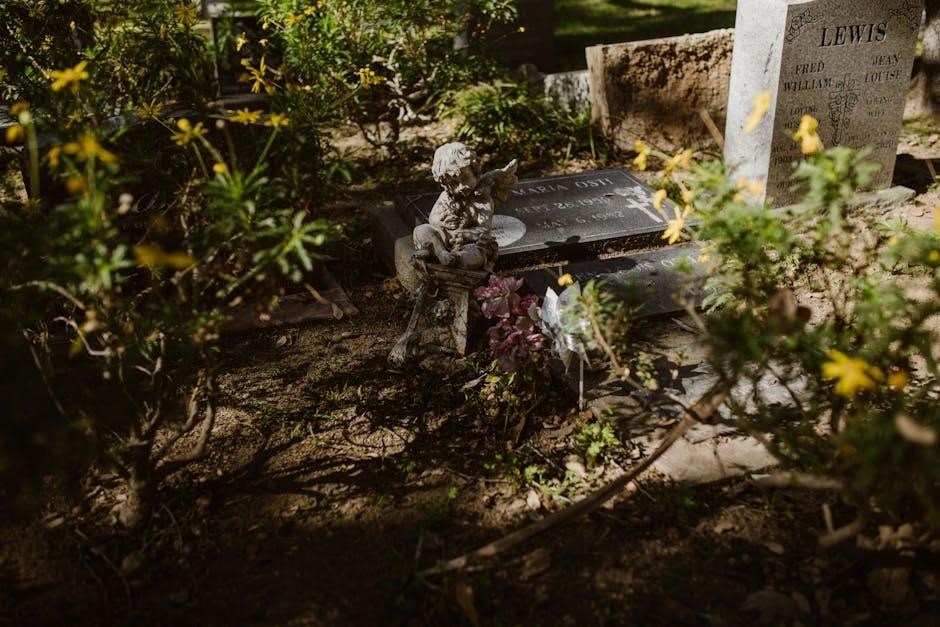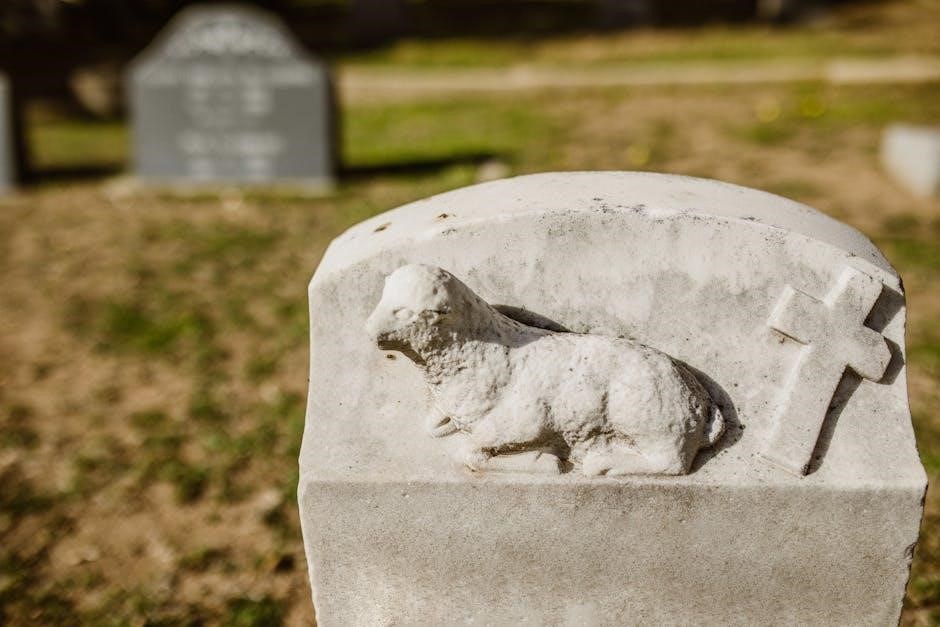“Waking the Tiger: Healing Trauma” by Peter A. Levine introduces a groundbreaking approach to trauma recovery, emphasizing the body’s innate healing capacity through Somatic Experiencing.
Overview of the Book and Its Significance
Waking the Tiger: Healing Trauma, written by Peter A. Levine and published in 1997, is a seminal work that revolutionized the understanding and treatment of trauma. The book introduces Somatic Experiencing (SE), a naturalistic, neurobiological approach to healing that focuses on the body’s innate capacity to recover from traumatic experiences. Levine’s work challenges traditional views of trauma, offering a hopeful perspective that emphasizes the human body’s ability to heal. By normalizing trauma symptoms and the healing process, the book empowers readers to understand that recovery is possible even from seemingly ordinary yet traumatic experiences. Levine’s approach has been transformative, reshaping the field of trauma recovery for nearly three decades. His insights have helped countless individuals and professionals alike, making Waking the Tiger a cornerstone in the study and treatment of trauma.
The Author: Peter A. Levine and His Contributions
Dr. Peter A. Levine, a renowned psychologist and trauma expert, is the creator of Somatic Experiencing (SE), a revolutionary approach to healing trauma. His work, spanning decades, has profoundly impacted the field of trauma recovery. Levine’s observations in the 1970s revealed that humans react uniquely to stress compared to other mammals, forming the foundation of his groundbreaking theories. In Waking the Tiger, co-authored with Ann Frederick, Levine introduced a neurobiological perspective on trauma, emphasizing the body’s role in healing. His approach normalizes trauma symptoms and offers practical tools for recovery, empowering individuals to reclaim their well-being. Levine’s contributions have reshaped modern therapy practices, making him a visionary in the field of trauma treatment. His work continues to inspire professionals and individuals worldwide, providing hope and effective strategies for healing.

The Concept of Somatic Experiencing (SE)
Somatic Experiencing (SE) is a naturalistic, neurobiological approach to healing trauma, developed by Dr. Peter A. Levine. It focuses on the body’s innate capacity to process and release traumatic stress.
Definition and History of Somatic Experiencing
Somatic Experiencing (SE) is a pioneering approach to trauma healing developed by Dr. Peter A. Levine. It is rooted in the observation of how animals naturally recover from stress and trauma, emphasizing the body’s innate capacity to heal. Levine began developing SE in the 1970s, drawing from his studies in neurobiology, psychology, and ethology. The method focuses on processing traumatic experiences by gently engaging the nervous system, allowing the body to release stored tension and restore balance. SE is non-invasive and client-centered, encouraging individuals to reconnect with their physical sensations and instincts. By addressing the physiological roots of trauma, SE offers a holistic approach to recovery, empowering individuals to move beyond traumatic experiences. Levine’s work has been transformative, reshaping the field of trauma therapy and providing hope for millions worldwide. The history of SE reflects Levine’s dedication to understanding the interplay between the body and mind in healing.
The Neurobiological Approach to Trauma Healing
The neurobiological approach to trauma healing, as explored in Waking the Tiger, focuses on understanding how trauma impacts the brain and nervous system. Trauma disrupts the body’s natural response to stress, often causing the nervous system to become “stuck” in a state of hyperarousal or immobilization. Levine’s work highlights the role of the amygdala, hippocampus, and prefrontal cortex in processing traumatic experiences. Somatic Experiencing (SE) works by gently guiding the nervous system to complete the incomplete survival responses, allowing the body to release stored energy and restore equilibrium. This approach emphasizes the interplay between the autonomic nervous system, sensory awareness, and emotional regulation. By addressing trauma at its biological roots, SE provides a pathway for the brain and body to reintegrate and heal. Levine’s neurobiological insights offer a groundbreaking understanding of how trauma can be transformed and resolved, fostering resilience and well-being.

Understanding Trauma and Its Impact
Trauma disrupts the body’s natural balance, affecting emotional, mental, and physical well-being. It alters nervous system function, leading to heightened stress responses and impaired self-regulation, often causing long-term distress if untreated.
What is Trauma and How It Affects the Body
Trauma is a response to deeply distressing events that overwhelm an individual’s ability to cope, often disrupting emotional, mental, and physical well-being. It can stem from extreme experiences like abuse, accidents, or neglect, as well as subtler, chronic stressors. When trauma occurs, the body’s “fight or flight” response is activated, releasing stress hormones like adrenaline and cortisol. If the trauma is not resolved, these physiological responses can become stuck, leading to chronic tension, pain, and dysfunction. The body may develop defensive patterns, such as heightened arousal, numbness, or avoidance, to manage the perceived threat. Over time, this can manifest as physical symptoms like chronic pain, digestive issues, or immune system weaknesses. Levine emphasizes that trauma is not just an emotional or psychological issue but a physiological one, deeply intertwined with the body’s response to threat and its inability to return to a state of balance and safety. This understanding is central to the Somatic Experiencing approach, which focuses on restoring the body’s natural healing processes to release stored trauma and reclaim resilience.
The Role of the Body in Trauma and Recovery
The body plays a central role in both the experience of trauma and the process of recovery. When traumatic events occur, the body often responds by tensing muscles, freezing, or dissociating as a survival mechanism. This physiological response can become stuck, leading to chronic tension, pain, or numbness. Levine explains that the body holds the “memory” of trauma, which manifests as stored energy or unresolved responses. In recovery, the body becomes a vital tool for healing. By reconnecting with physical sensations, individuals can release pent-up energy and restore balance. The body’s innate wisdom guides the healing process, allowing it to gradually discharge tension and return to a state of relaxation and safety. This somatic approach emphasizes that recovery is not just about processing emotions but also about reclaiming the body’s natural capacity for self-regulation and resilience.

The Core Principles of Healing Trauma

Healing trauma involves empowering the body to release stored energy, restoring balance, and fostering self-regulation. Levine’s approach emphasizes awareness, gentle processing, and reconnecting with the body’s innate wisdom to promote resilience and recovery.
The Importance of Body Awareness and Self-Regulation
Body awareness is a cornerstone of healing trauma, as it allows individuals to reconnect with their physical sensations and release stored tension. Levine emphasizes that trauma often manifests as trapped energy in the body, which can be freed through heightened awareness. Self-regulation is equally critical, enabling individuals to manage their nervous system responses and maintain a sense of safety. By cultivating these skills, people can gradually process traumatic experiences without becoming overwhelmed. Levine’s approach encourages gentle, incremental steps, allowing the body to reintegrate and restore balance naturally. This focus on body awareness and self-regulation empowers individuals to reclaim control over their physiological and emotional states, fostering resilience and promoting lasting healing.
Normalizing Trauma Symptoms and the Healing Process
Normalizing trauma symptoms is essential for reducing stigma and fostering understanding. Levine explains that trauma symptoms, such as hypervigilance or emotional numbness, are not pathological but rather the body’s adaptive responses to overwhelming events. By reframing these reactions as natural survival mechanisms, individuals can approach their healing journey with compassion and curiosity. The healing process, as outlined in “Waking the Tiger,” emphasizes gradual and non-threatening steps to release stored energy and restore equilibrium. Levine underscores that healing is not about erasing the past but about integrating traumatic experiences into one’s narrative. This normalization helps individuals recognize that their symptoms are valid and temporary, fostering hope and resilience. By acknowledging the body’s innate capacity to heal, Levine’s approach demystifies trauma recovery, making it accessible and empowering for those seeking to reclaim their well-being.

The Role of Instincts in Healing
Instincts play a vital role in healing by guiding the body’s natural responses to trauma. Levine highlights how instincts, like those seen in animals, help release pent-up energy and restore balance. This innate wisdom empowers individuals to reconnect with their primal responses, fostering resilience and recovery. By honoring instincts, healing becomes a more intuitive and organic process, aligning with the body’s inherent capacity to mend and rebalance itself. Levine’s approach emphasizes trusting these instincts as a cornerstone of trauma recovery, offering a powerful pathway toward restoration and well-being.
How Instincts Help in Trauma Recovery
In Waking the Tiger: Healing Trauma, Peter Levine explores how instincts play a crucial role in trauma recovery by activating the body’s natural healing mechanisms. Instincts, often observed in animals, enable them to “shake off” trauma, releasing stored energy and restoring balance. Levine argues that humans can tap into this primal wisdom to process trauma without becoming overwhelmed. By paying attention to instinctual responses, such as physical sensations or gut feelings, individuals can reconnect with their body’s innate ability to heal. This approach fosters resilience and empowers people to move through traumatic experiences without reliving them. Levine’s Somatic Experiencing (SE) method guides individuals to access these instinctual resources, allowing the body to naturally release tension and reclaim a sense of safety and well-being. This instinct-driven process highlights the body’s capacity to heal when given the opportunity to express and resolve trauma organically.
Comparative Analysis of Human and Animal Responses to Trauma
In Waking the Tiger: Healing Trauma, Peter Levine draws a compelling comparison between how animals and humans respond to trauma. Animals in the wild, when threatened, activate a “fight or flight” response, but once the danger passes, they instinctively discharge excess energy through physical movements like shaking or running. This natural process allows them to return to a state of balance without long-term psychological damage. In contrast, humans often suppress their reactions due to cognitive overrides, social conditioning, or fear of retraumatization. This suppression can lead to chronic trauma symptoms like PTSD, anxiety, or physical pain. Levine’s work highlights how humans can learn from animals by reconnecting with their instinctual responses and allowing the body to naturally release stored tension. This comparative insight underscores the importance of somatic awareness in healing and bridges the gap between animal instinct and human consciousness.

Techniques and Practices for Healing Trauma
Somatic Experiencing (SE) offers practical techniques to release physical tension stored from trauma. Methods like tracking sensations, pendulation, and titration help gradually process and discharge stored energy, promoting recovery and balance.
Practical Exercises for Releasing Trauma
In “Waking the Tiger,” Peter Levine introduces practical exercises to release trauma stored in the body. Techniques like “pendulation” help clients oscillate between states of tension and relaxation, gradually discharging stored energy. Another exercise, “titration,” involves processing traumatic memories in small, manageable doses to avoid overwhelm. Levine also emphasizes “Shaking and Vibration,” natural responses that mimic animals’ instinctual release of trauma. These exercises encourage the body to complete unfinished survival responses, restoring balance to the nervous system. Additionally, mindful awareness practices, such as focusing on physical sensations, help individuals reconnect with their bodies and release pent-up energy. These exercises are designed to empower individuals to reclaim control over their trauma, fostering resilience and promoting long-term healing. By integrating these practices, Levine’s approach offers a holistic path to recovery, emphasizing the body’s innate capacity to heal itself.
The Power of Mind-Body Connection in Healing
In “Waking the Tiger,” Peter Levine emphasizes the profound role of the mind-body connection in trauma recovery. Levine argues that trauma is not just an emotional or psychological experience but is deeply embedded in the body. By fostering awareness of physical sensations, individuals can access and release stored trauma energy. Levine’s approach contrasts with traditional talk therapy, which often focuses solely on mental processing. Instead, he advocates for a holistic method that integrates the body’s wisdom. This mind-body connection allows individuals to reconnect with their inner resources, promoting self-regulation and resilience. Levine draws parallels with animals’ instinctual responses to trauma, highlighting how humans can similarly harness their bodily intelligence to heal. This harmonious interplay between mind and body creates a powerful framework for transforming traumatic experiences into opportunities for growth and restoration. By uniting these two realms, Levine’s work offers a revolutionary path to wholeness and vitality.

The Visionary Approach of Peter A. Levine
Peter A. Levine’s groundbreaking work in trauma healing introduced Somatic Experiencing, a revolutionary mind-body approach that empowers individuals to release stored trauma energy naturally. His innovative methods transformed trauma treatment.

Levine’s Breakthroughs in Trauma Treatment
Peter A. Levine’s work introduced groundbreaking concepts in trauma recovery, notably the development of Somatic Experiencing (SE). Levine observed that animals naturally recover from trauma through physical responses like shaking, inspiring his approach. Unlike traditional talk therapy, SE focuses on processing trauma through bodily sensations, reducing the risk of re-traumatization. Levine’s concept of “pendulation” involves oscillating between tension and relaxation to release trauma energy, empowering individuals to actively participate in their healing. His approach integrates psychology and physiology, offering a holistic treatment that bridges mind and body; Levine’s emphasis on innate healing mechanisms and physical awareness has significantly influenced trauma therapy, providing an alternative to verbal-based methods and fostering a more empowered recovery process. His methods have been widely adopted, underscoring their effectiveness in modern therapeutic practices.
How His Work Changed the Field of Trauma Recovery
Peter A. Levine’s groundbreaking work revolutionized the field of trauma recovery by introducing Somatic Experiencing (SE), a paradigm-shifting approach that emphasizes the body’s innate capacity to heal. His theories challenged traditional talk-based therapies, offering a more holistic and effective method for processing trauma. Levine’s work shifted the focus from solely psychological interventions to a mind-body integration, empowering individuals to reclaim control over their healing journey. By recognizing the parallels between human and animal responses to trauma, Levine provided a biological framework for understanding and addressing traumatic stress. His work has influenced a wide range of therapeutic practices, inspiring new approaches in psychotherapy, physiology, and mindfulness-based healing. Levine’s contributions have made trauma recovery more accessible and effective, leaving a lasting impact on modern mental health care and beyond.

The Book’s Reception and Impact
“Waking the Tiger” has garnered widespread acclaim for its innovative approach to trauma healing. Readers and experts praise its accessibility and profound insights, making it a seminal work in the field.
Reviews and Feedback from Readers and Experts
“Waking the Tiger” has received overwhelming praise for its groundbreaking approach to trauma healing. Experts in psychology and physiology have lauded Levine’s work as a landmark contribution to the field of trauma recovery. Readers have shared powerful testimonials, describing how the book empowered them to understand and heal from their traumatic experiences. Many therapists and practitioners have incorporated Levine’s principles into their practice, citing the book as a foundational resource. The clarity and accessibility of Levine’s writing have made it a favorite among both professionals and general readers. The book’s practical exercises and insightful explanations have resonated deeply, offering hope and tools for those seeking to reclaim their lives from trauma. Its impact is evident in the thousands of positive reviews and its widespread adoption in therapeutic communities worldwide.
How “Waking the Tiger” Has Influenced Modern Therapy Practices
“Waking the Tiger” has revolutionized modern therapy practices by introducing Somatic Experiencing (SE) as a groundbreaking approach to trauma recovery. Levine’s work has shifted the focus from solely cognitive-based therapies to incorporating the body’s role in healing. Many therapists now integrate SE into their practices, emphasizing body awareness and self-regulation. The book has also inspired the development of trauma-informed care, encouraging professionals to view symptoms as survival responses rather than pathologies. Its principles have been adapted into various therapeutic modalities, making it a cornerstone of contemporary trauma treatment. Additionally, “Waking the Tiger” has influenced training programs for mental health professionals, ensuring that future practitioners are well-equipped to address trauma holistically. By bridging the gap between neuroscience and body-oriented therapies, Levine’s work continues to shape the evolution of trauma recovery worldwide.
The Lasting Legacy of “Waking the Tiger”
“Waking the Tiger” offers a transformative approach to healing trauma, bridging neuroscience with body-oriented techniques. Levine’s work empowers individuals to reclaim their resilience, fostering profound and lasting recovery.
“Waking the Tiger: Healing Trauma” has left an indelible mark on the field of trauma recovery, revolutionizing how we understand and address traumatic experiences. Peter A. Levine’s pioneering work introduced Somatic Experiencing (SE), a groundbreaking approach that emphasizes the body’s innate capacity to heal. By focusing on physiological responses and instinctual reactions, Levine empowered individuals to reclaim control over their trauma, fostering resilience and self-regulation. The book’s accessible and compassionate insights have resonated with both professionals and lay readers, making it a cornerstone in modern therapy practices. Its influence extends beyond individual healing, shaping a broader cultural shift toward body-oriented therapies. Levine’s vision continues to inspire new generations of practitioners, ensuring that “Waking the Tiger” remains a timeless guide for anyone seeking to understand and overcome trauma. Its legacy is a testament to the transformative power of mind-body connection and instinctual wisdom.
Encouragement to Explore Somatic Experiencing
Exploring Somatic Experiencing (SE) offers a powerful path to healing and self-discovery, as outlined in “Waking the Tiger: Healing Trauma”. This approach empowers individuals to reconnect with their bodies, unlocking innate resilience and fostering a deeper understanding of trauma. By engaging with SE practices, one can learn to release stored tension, calm the nervous system, and reclaim a sense of safety and vitality. Levine’s work encourages a shift from viewing trauma as a permanent wound to seeing it as an opportunity for growth and transformation. Whether you’re seeking personal healing or professional development, SE provides a compassionate and effective framework. Embrace this transformative approach, and discover how your body can guide you toward wholeness and freedom from trauma’s grip. Start your journey today by exploring SE resources or working with a certified practitioner.










